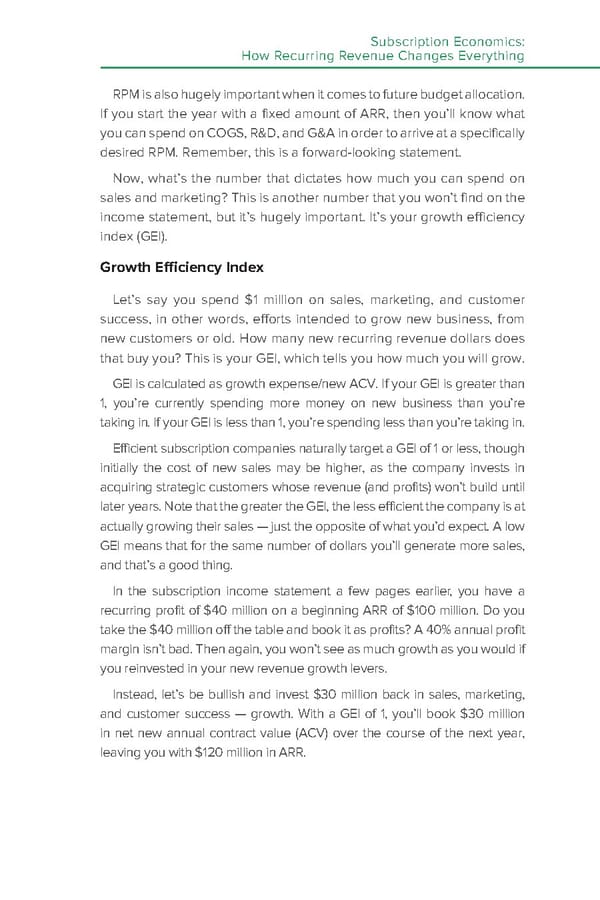Chapter 1 Subscription Economics: How Recurring Revenue Changes Everything RPM is also hugely important when it comes to future budget allocation. If you start the year with a fixed amount of ARR, then you’ll know what you can spend on COGS, R&D, and G&A in order to arrive at a specifically desired RPM. Remember, this is a forward-looking statement. Now, what’s the number that dictates how much you can spend on sales and marketing? This is another number that you won’t find on the income statement, but it’s hugely important. It’s your growth efficiency index (GEI). Growth Efficiency Index Let’s say you spend $1 million on sales, marketing, and customer success, in other words, efforts intended to grow new business, from new customers or old. How many new recurring revenue dollars does that buy you? This is your GEI, which tells you how much you will grow. GEI is calculated as growth expense/new ACV. If your GEI is greater than 1, you’re currently spending more money on new business than you’re taking in. If your GEI is less than 1, you’re spending less than you’re taking in. Efficient subscription companies naturally target a GEI of 1 or less, though initially the cost of new sales may be higher, as the company invests in acquiring strategic customers whose revenue (and profits) won’t build until later years. Note that the greater the GEI, the less efficient the company is at actually growing their sales — just the opposite of what you’d expect. A low GEI means that for the same number of dollars you’ll generate more sales, and that’s a good thing. In the subscription income statement a few pages earlier, you have a recurring profit of $40 million on a beginning ARR of $100 million. Do you take the $40 million off the table and book it as profits? A 40% annual profit margin isn’t bad. Then again, you won’t see as much growth as you would if you reinvested in your new revenue growth levers. Instead, let’s be bullish and invest $30 million back in sales, marketing, and customer success — growth. With a GEI of 1, you’ll book $30 million in net new annual contract value (ACV) over the course of the next year, leaving you with $120 million in ARR.
 Subscription Economics Page 12 Page 14
Subscription Economics Page 12 Page 14